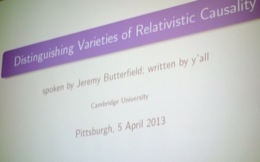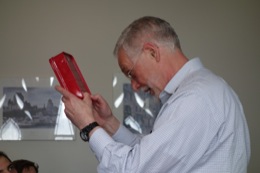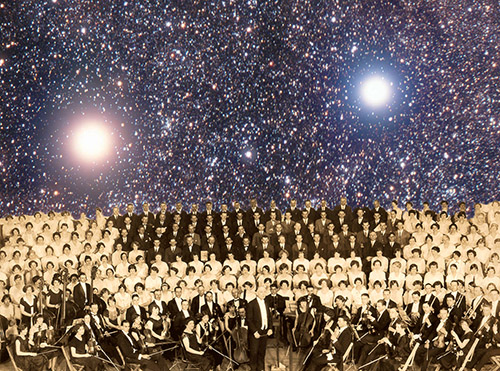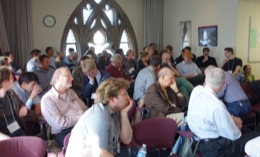
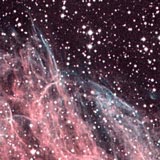
![]()
home
::: about
::: news
::: links
::: giving
::: contact
![]()
events
::: calendar
::: lunchtime
::: annual
lecture series
::: conferences
![]()
people
::: visiting fellows
::: postdoc fellows
::: resident fellows
::: associates
![]()
joining
::: visiting fellowships
::: postdoc fellowships
::: senior fellowships
::: resident fellowships
::: associateships
![]()
being here
::: visiting
::: the last donut
::: photo album
|
Relativistic Causality and the Pittsburgh Symphony Orchestra on Alpha Centauri
We had a pause of perhaps two hours after the Irvine-Pittsburgh-Princeton event was over before the next one started. It was just long enough for me to redirect my thoughts to relativistic causality.
That was probably the reason that the Fellow had drifted into my office a little ahead of the event. He had been looking at the title for the talk of the first speaker, Jeremy Butterfield: "Distinguishing Varieties of Causation." Did I know what he would speak about? The short answer, which I gave truthfully, was that I did not. However I understood the real import of the question. A talk with that title could be quite general. Or, given the context, it might be a truckload of physics hocus-pocus, intelligible only to the specialists. Which would it be? So I added cautiously, "Jeremy is a great speaker, but he does like technicalities." A little later, as I was taking my seat in the conference, I had a premonition of what was to come. Jeremy's title was projected onto the screen. It was not quite what the program had said. It now read "Distinguishing Varieties of Relativistic Causality." The additional word said that this talk would not cover generalities about causation. Giovanni Valente, the tireless organizer and moving spirit behind the event, opened the conference. He mentioned that the conception of it has come from reading one of Jeremy's papers on causation years before.
The Butterfield geniality field had clearly been acting at a distance on John Earman. Ahead of the event, he was asking who would introduce Jeremy and whether he could take just a few moments. Those moments came and John rose. He was beaming with the suppressed exuberance of an eight-year-old who had just glued his sister's bedroom door shut. He now made a mock formal presentation. He held up a box to be presented to Jeremy. It read "Keep calm and carry on." He proceeded to unpack its contents. We could now turn to more serious matters. The substance of Jeremy's talk was an inventory of ideas concerning causality. The key fact to note about them, however, was their context. They were all formulated within algebraic quantum field theory. It is difficult for me to convey simply just what that means to those of you who have not been following developments in philosophy of physics.
By this time, Jeremy's developments had turned to the expected moment in a quantum physics talk. There is going to be some display of wildly counterintuitive physics. Today, it would come by way of the Reeh-Schlieder theorem. This theorem asserts the cyclicity of the vacuum. Just what that means is obscure to non-experts. So Jeremy produced this story: Imagine that we want to bring about a complete clone of the Pittsburgh Symphony Orchestra on a planet near a distant star, say Alpha Centauri. To fix the image in our heads, Jeremy elaborated quite colorfully. He described precisely who would conduct and which pieces they would play.
Now came the oddness. There is, he assured us, according to the theorem, something we can do here on earth to the vacuum in some small region of space. Its outcome would be the creation of something as close as we like to that orchestra round the distant star. It was a memorable image upon which to end his presentation. When the talk closed, I was still lamenting the distance between these notions of causality and what is discussed in the general literature in philosophy of science on causality. As it happened, Jim Woodward had been sitting next to me throughout the talk. I had been wondering through it whether he could make a connection. So I seized the moment and went over to him and asked: "What does the world's leading proponent of the interventionist view of causation make of all this?" I had expected he would shrug his shoulders and say that he tried to connect with it, but he had failed. The gap is just too great. He will leave these thinkers to enjoy in solitude the beautiful flowers hidden in their walled garden. I was quite wrong. I had underestimated him. He smiled, glanced at me and paused. He was signaling a silent query "Was I just making conversation or did I really want to know?" I really wanted to know. Thus authorized, he proceeded. He replied that he'd seen the importance of distinguishing when operations here bring about something far away and when operations here merely give us information about things far away. But to get clearer he needed to know just what a "selective measurement" is. Specifically that was the thing we must do here to bring about the orchestra there.
A non-selective measurement, the other type, is the usual sort in quantum theory. You measure the energy of a particle and get some answer. Because the measurement process is stochastic, you cannot assure that you get some preselected answer. The best you can get ahead of time are probabilities for different answers. That deficiency is overcome in a selective measurement. You can assure a particular result. The picture was now becoming clearer. The presence of the distant orchestra is correlated by the usual quantum magic with some state here on earth. That means that if one happens, so does the other. We normally cannot do a measurement to force the required state to appear here. Ordinary quantum measurement doesn't work that way. But if we could, then we would force the orchestra to appear around the distant star. A selective measurement here provides the missing piece. It can do it.
We were ushered to our seats as question time opened. It turned out that Jim's simple puzzlement grew to the issue that focussed the discussion. The questions worked through a series of proposals all designed to clarify just what could and could not be done in the place of the selective measurement. Perhaps, Jos Uffink suggested, there is no local manipulation that we could do here on earth that would realize the operation needed. We'd have to do something more extended in space that might include activities on the distant planet after all. Or perhaps, Giovanni suggested, the whole appearance of the orchestra is best understood as a vacuum fluctuation. Hans Halvorsen was more definite. There's nothing we can do here to bring about the orchestra. We can only force the universe to adopt a definite answer to the question of whether there is an orchestra there or not, yes or no, whereas before there was no definite answer. Bryan Roberts made the requisite interjection "...and you don't think that's amazing?!" All the while Jeremy stood at the front, parrying the proposals as needed. He had advertised his intent with his talk. It would be to draw the lions out from their dens. There was no doubt that he had succeeded. With that, the first day of the conference closed. There is a day and a half more to come. It is likely to get more energetic and more puzzling, but exactly how is not something that will be recorded here. Forgive me, but sometimes you just have to be here. John D. Norton
|

